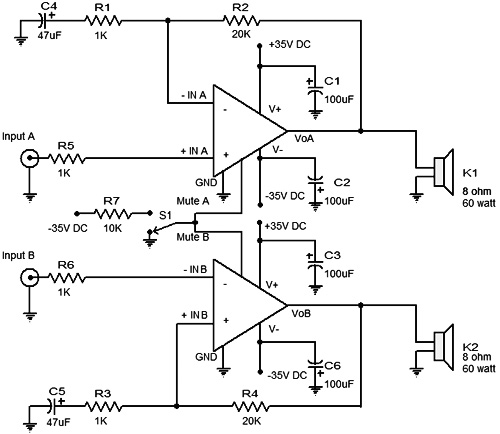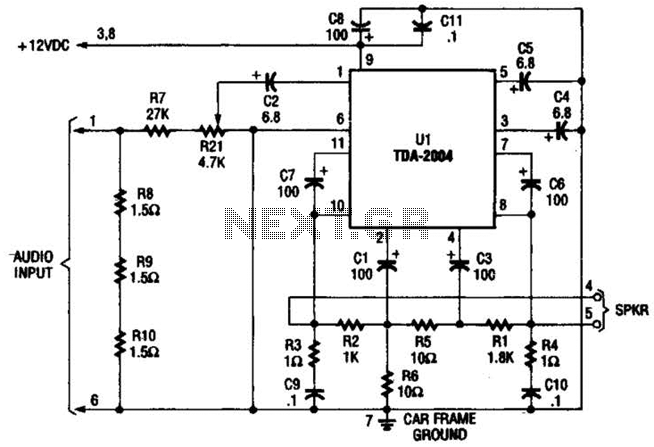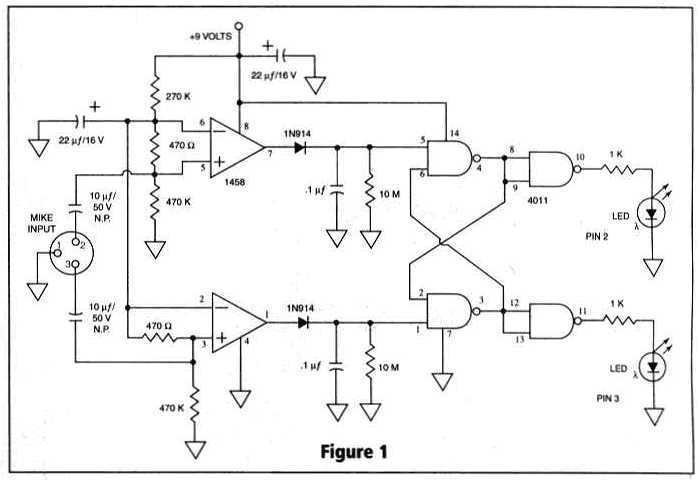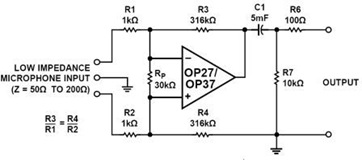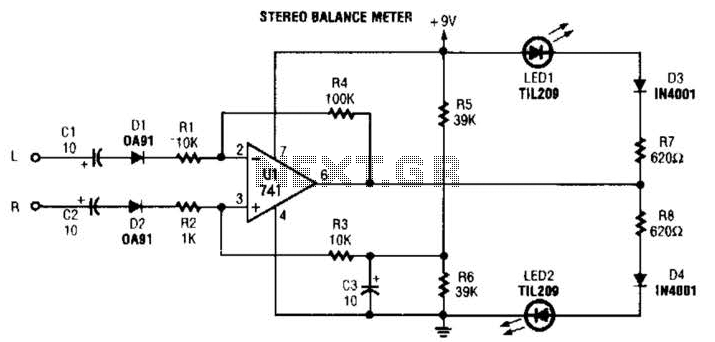
The Big-E Stereo Parabolic Microphone
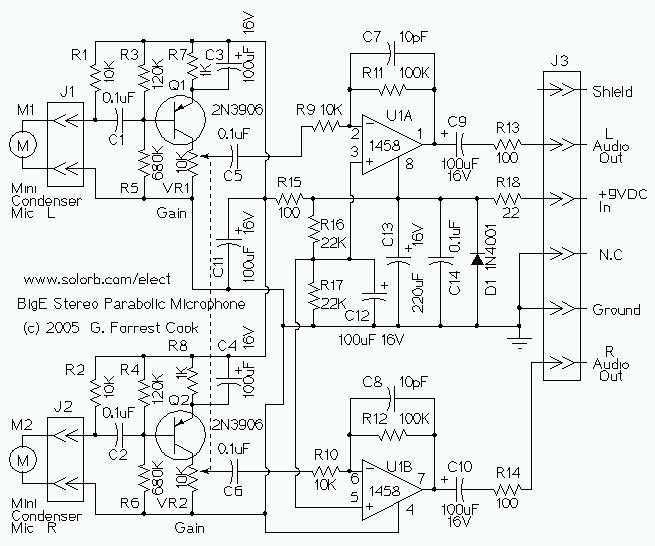
This device is a stereo amplifier for a high sensitivity stereo parabolic microphone. It can be used for listening to distant sounds. The Big-E can be used with headphones or as an audio source for a stereo tape recorder or a PC sound card. This circuit also works nicely as a remote stereo audio receiver for accompanying a video surveillance system. It is capable of operating on the end of a four wire shielded cable that is more than 100 feet long.
The stereo amplifier circuit designed for the high sensitivity parabolic microphone, referred to as the Big-E, is engineered to enhance audio signals captured from distant sources. The circuit typically includes a preamplifier stage to boost the low-level microphone signals, followed by a power amplifier stage to drive headphones or other audio output devices.
Key components of the circuit may include operational amplifiers configured in a differential amplifier arrangement to ensure high gain and low noise performance. The use of a high-quality shielded cable is crucial for minimizing interference, especially over long distances exceeding 100 feet. The four-wire configuration allows for separate signal and ground paths, which helps in reducing crosstalk and maintaining signal integrity.
The output stage of the amplifier is designed to be compatible with both headphones and line-level inputs, such as those found on stereo tape recorders or PC sound cards. This versatility allows for multiple applications, ranging from personal listening to integration with audio recording equipment.
Additionally, the circuit can be adapted for use in video surveillance systems, where audio capture is essential for monitoring environments. The remote stereo audio receiver capability enhances the functionality of such systems, providing synchronized audio to accompany video feeds.
Power supply considerations for the amplifier are also important, as it should be capable of operating efficiently over long distances without significant voltage drop. A regulated power supply circuit may be incorporated to ensure stable operation, regardless of variations in cable length or load conditions.
Overall, the design of the Big-E stereo amplifier emphasizes high sensitivity, low noise, and versatility, making it suitable for a wide range of audio applications in both recreational and professional settings.This device is a stereo amplifier for a high sensitivity stereo parabolic microphone. It can be used for listening to distant sounds. The Big-E can be used with headphones or as an audio source for a stereo tape recorder or a PC sound card. This circuit also works nicely as a remote stereo audio receiver for accompanying a video surveillance system.
It is capable of operating on the end of a four wire shielded cable that is more than 100 feet long. 🔗 External reference
The stereo amplifier circuit designed for the high sensitivity parabolic microphone, referred to as the Big-E, is engineered to enhance audio signals captured from distant sources. The circuit typically includes a preamplifier stage to boost the low-level microphone signals, followed by a power amplifier stage to drive headphones or other audio output devices.
Key components of the circuit may include operational amplifiers configured in a differential amplifier arrangement to ensure high gain and low noise performance. The use of a high-quality shielded cable is crucial for minimizing interference, especially over long distances exceeding 100 feet. The four-wire configuration allows for separate signal and ground paths, which helps in reducing crosstalk and maintaining signal integrity.
The output stage of the amplifier is designed to be compatible with both headphones and line-level inputs, such as those found on stereo tape recorders or PC sound cards. This versatility allows for multiple applications, ranging from personal listening to integration with audio recording equipment.
Additionally, the circuit can be adapted for use in video surveillance systems, where audio capture is essential for monitoring environments. The remote stereo audio receiver capability enhances the functionality of such systems, providing synchronized audio to accompany video feeds.
Power supply considerations for the amplifier are also important, as it should be capable of operating efficiently over long distances without significant voltage drop. A regulated power supply circuit may be incorporated to ensure stable operation, regardless of variations in cable length or load conditions.
Overall, the design of the Big-E stereo amplifier emphasizes high sensitivity, low noise, and versatility, making it suitable for a wide range of audio applications in both recreational and professional settings.This device is a stereo amplifier for a high sensitivity stereo parabolic microphone. It can be used for listening to distant sounds. The Big-E can be used with headphones or as an audio source for a stereo tape recorder or a PC sound card. This circuit also works nicely as a remote stereo audio receiver for accompanying a video surveillance system.
It is capable of operating on the end of a four wire shielded cable that is more than 100 feet long. 🔗 External reference
%2B2%2BCH%2Bby%2BIC%2B%2BNE5532%2Bor%2BLF353.jpg)
